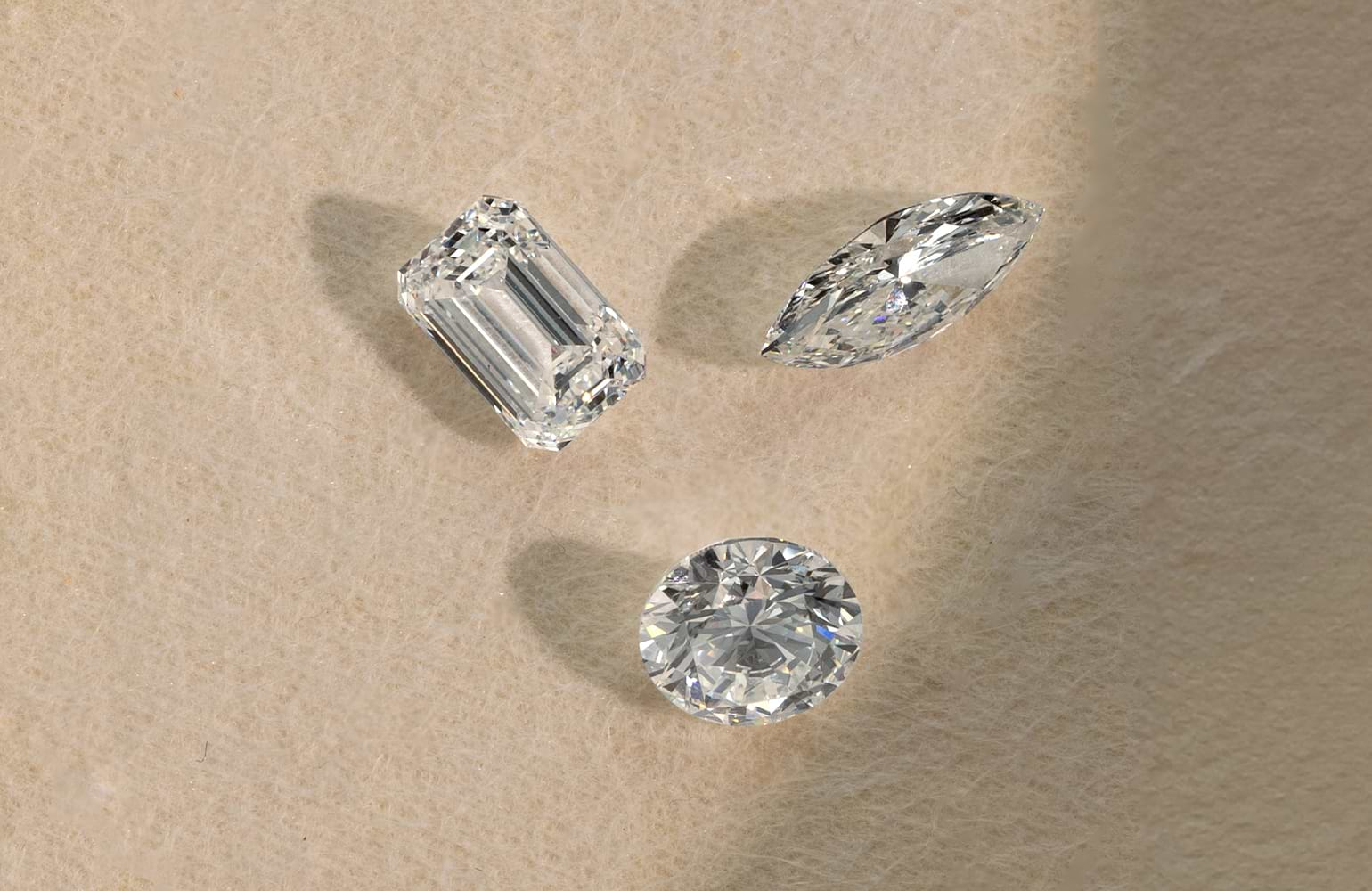Diamonds have long been cherished as symbols of love, luxury, and everlasting beauty. However, not everyone can afford the hefty price tag that often accompanies these precious gems. That’s where diamond simulants come into play. These sparkling alternatives offer the allure of diamonds without breaking the bank. In this article, we’ll delve into the world of diamond simulants, exploring their types, characteristics, advantages, and limitations, as well as providing tips on how to choose, care for, and differentiate them from natural diamonds.
Table of Contents
Types of Diamond Simulants Read
When it comes to diamond simulants read, there are two main categories: natural and synthetic. Natural simulants include gems like white topaz and quartz, which possess similar optical properties to diamonds but are naturally occurring minerals. On the other hand, synthetic simulants, such as cubic zirconia (CZ) and moissanite, are man-made gems crafted in laboratories to mimic the brilliance and sparkle of diamonds.
Characteristics of Diamond Simulants
Diamond simulants exhibit various characteristics that make them desirable alternatives to natural diamonds. One of the key factors is brilliance, referring to the gem’s ability to reflect light and sparkle. While natural diamonds are known for their exceptional brilliance, simulants can also dazzle with their radiant glow. Additionally, simulants boast impressive hardness, making them durable enough for everyday wear. Moreover, they come in a spectrum of colors and clarities, allowing consumers to choose the perfect stone to suit their preferences and budget.
Popular Diamond Simulants
Among the plethora of diamond simulants available in the market, some stand out for their popularity and quality. Cubic zirconia (CZ) tops the list, renowned for its affordability and brilliance that rivals that of diamonds. Moissanite, another favorite, boasts exceptional fire and brilliance, often mistaken for diamonds due to its similar appearance. White sapphire and synthetic diamond are also favored choices for those seeking alternative gemstones with superior sparkle and durability.
Advantages of Diamond Simulants
Diamond simulants offer several advantages that make them attractive options for jewelry enthusiasts. Firstly, they are significantly more affordable than natural diamonds, allowing individuals to enjoy the beauty of sparkling gemstones without breaking the bank. Additionally, simulants are highly durable and resistant to scratches, ensuring longevity and minimal maintenance. Moreover, they offer a wide variety of options in terms of colors, shapes, and sizes, providing endless possibilities for creating unique and personalized jewelry pieces.
Limitations of Diamond Simulants
Despite their appeal, diamond simulants do have some limitations that consumers should be aware of. One of the primary drawbacks is the lack of rarity compared to natural diamonds, which may diminish their sentimental value for some individuals. Additionally, while simulants can mimic the brilliance of diamonds to a certain extent, they may not possess the same level of sparkle and fire. Furthermore, simulants may show signs of wear over time, requiring periodic maintenance to retain their luster.
How to Differentiate Between Diamond and Simulant
Distinguishing between a diamond and a simulant can be challenging, but there are several methods to help discern the difference. Professional testing by a gemologist is the most reliable way to determine the authenticity of a gemstone. Visual inspection under magnification can also reveal clues such as inclusions and facet patterns. Additionally, a thermal conductivity test can be performed using a diamond tester to assess the gem’s heat retention properties, as diamonds conduct heat more effectively than most simulants.
Choosing Between Diamond and Simulant
When deciding between a diamond and a simulant, there are several factors to consider. Budget is often a primary consideration, as natural diamonds can be significantly more expensive than simulants. However, the occasion and intended use of the jewelry should also be taken into account. While natural diamonds are prized for their rarity and symbolism, simulants offer a practical and budget-friendly alternative for everyday wear or fashion jewelry.
Caring for Diamond Simulants
Proper care and maintenance are essential for preserving the beauty of diamond simulants read. Regular cleaning with mild soap and warm water can help remove dirt and oils accumulated on the gem’s surface. Avoid using harsh chemicals or abrasive cleaners that may damage the stone. When not in use, store simulants separately from other jewelry to prevent scratching and wear.
The Ethical Aspect of Diamond Simulants
In recent years, ethical considerations have become increasingly important for consumers when choosing gemstones. Diamond simulants offer a conflict-free alternative to natural diamonds, lab grown diamonds, as they are produced without the environmental and ethical concerns associated with diamond mining. Furthermore, lab-grown simulants contribute to sustainable practices by reducing the demand for mined gemstones and minimizing environmental impact.
Trends in Diamond Simulant Usage
The popularity of diamond simulants has surged in recent years, driven by changing consumer preferences and lifestyle trends. Engagement rings featuring moissanite or cubic zirconia have become increasingly common, offering couples an affordable yet beautiful option to symbolize their commitment. Similarly, fashion jewelry adorned with synthetic diamonds or white sapphires has gained popularity among fashion-conscious individuals seeking glamorous yet budget-friendly accessories.
Consumer Perception and Acceptance
The perception of diamond simulants has evolved over time, with many consumers embracing these alternatives as viable options for fine jewelry. As awareness of ethical and environmental issues continues to grow, more individuals are opting for conflict-free and sustainable gemstones like simulants. With advancements in gemstone technology and manufacturing techniques, simulants are becoming indistinguishable from natural diamonds to the untrained eye, further fueling their acceptance and adoption in the jewelry market.
Conclusion
In conclusion, diamond simulants offer a compelling alternative to natural diamonds for individuals seeking beauty, brilliance, and affordability in their jewelry choices. With a wide variety of options available, from cubic zirconia to moissanite, consumers can find the perfect simulant to suit their preferences and budget. While simulants may not possess the same rarity or sentimental value as natural diamonds, they offer numerous advantages, including durability, versatility, and ethical sourcing.



